Photography is a wonderful hobby. I have been taking pictures for about 10 years now. I often go hiking in the woods, camera in hand, on the lookout for birds and animals to photograph. I also enjoy taking macro photos of insects and flowers.
It doesn’t matter what the season. In the summer, I sit right in the middle of my flower garden and wait for hummingbirds and butterflies to visit. In winter, I bundle up and go walking—or even sit—where I think I might see something great to photograph.
I captured this photo of a blue jay one cold, snowy morning as I sat on my porch for more than two hours under a warm blanket. When I finally rose from my snow-covered lawn chair, I was so stiff I could barely open the front door—but it was so worth it.
I love blue jays, especially in winter. The contrast of the beautiful blue against the white snow is just stunning. The jays are also quite entertaining. They have such quirky head movements and are not shy around people, often perching quite close as they hope for the offer of a peanut.
In the middle of winter, when most birds have migrated south, it’s a real treat to have the jays stop by.
Next, check out this gorgeous gallery of “in the backyard” photography.
Raise your hand if you had heard of Zoom before March 2020. If it was new to you, you weren’t alone. When the COVID-19 pandemic hit and lockdowns began to be enforced, many people had to pivot quickly to working entirely online, from home. This meant that video chat software, like Zoom, went from fairly rare to ubiquitous. In December 2019, Zoom averaged 10 million users per day. By April 2020, that number shot up to over 300 million, as people logged on for work, school, social, and even dating meetups. Zoom is everywhere now. For proof, just check out how many times it shows up in the funniest memes of 2020.
The online meeting phenomenon has created a whole new world and, with it, a whole new set of etiquette rules for Zoom and other video-conferencing platforms, says Karen Donaldson, an etiquette teacher, communication and body language expert, and author. At first, everyone was confused and trying to roll with the punches, but now, a year into it, there are some clear guidelines about what to do and not to do on video calls.
This starts with lots of communication…about communicating. “These are unusual times, and it’s appropriate on video calls to acknowledge the current circumstances and the difficulties they bring,” Donaldson says. “It’s a new way of communicating, so allow extra time (and patience) for concerns and technical issues.” After all, there are so many ways video conference calls can go wrong. Once you’ve established that we’re all in this together, here are the Zoom etiquette tips you need to know.
Only video chat when video is necessary
Just because you can schedule something as a Zoom meeting doesn’t mean you should. “We have suddenly started to make every call into a video call, and in some cases, the telephone would be simpler, more effective, and save time,” says Lew Bayer, CEO of Civility Experts. Unless there’s a reason you need to see everyone’s faces, skip the extra stress and bandwidth of video.
Be selective about who you invite
There can be a temptation with virtual meetings to invite anyone and everyone since space isn’t a consideration. Don’t do it. “Just like live workplace meetings, there is no need to invite people simply out of courtesy,” Bayer says. If the content or purpose of the call does not apply directly to an individual, do not invite or obligate that person to attend.
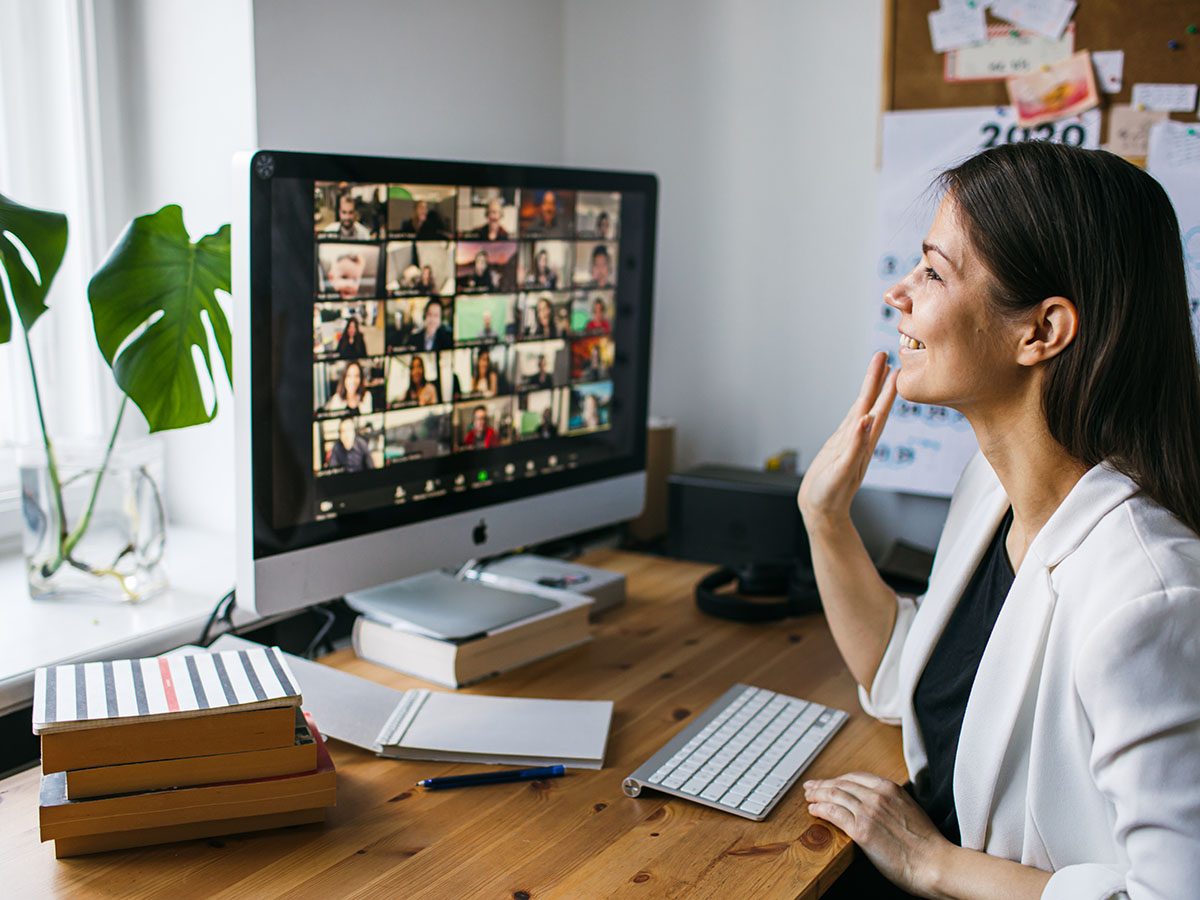
Make eye contact with the camera, not the person
The most common faux pas that people make on Zoom calls? Looking at the video box of the person they are talking to or staring at the video thumbnail of themselves. It may feel counterintuitive, but the polite thing to do is to look directly into the camera. “It feels a bit awkward at first, but trust me, the other person will feel like you are looking right at them,” says Annette Y. Harris, an etiquette expert, executive coach, and president and founder of ShowUp. “This tip is especially important for business Zoom meetings, where nonverbal body language is as important, or maybe more important, than what you have to say.” (Here are the secrets your body language reveals about you.)
Skip the pajamas, even on the bottom
Dressing appropriately for the occasion won’t just help you look more professional or presentable—putting on a complete outfit will also help you get in the right mental space, Bayer says. If it’s a work Zoom call, dress for work; if it’s a happy hour, put on a nice shirt and jeans; if it’s a school meeting, wear a put-together outfit.
Default to mute
“Not being mindful of when you are on or off mute is the quickest way to come across like a Zoom newbie,” Harris says. Proper Zoom etiquette is to keep yourself on mute unless you’re speaking. This eliminates background noise, electronic alerts, and other irritants like the noise of you chewing gum or drinking water. Just be sure to keep an eye on the mute/unmute icon so you don’t forget to unmute when it is your turn to talk. One of the most repeated phrases these days is: “Wait, you’re still on mute!”
Use a virtual background
People are easily distracted on video calls and will find themselves preoccupied by your piles of dirty laundry on the floor or your fascinating collection of glassware. Yes, you can arrange your environment to be neat, tidy, and less distracting, but the simplest solution is to use one of the Zoom backgrounds that automatically blocks out your surroundings, Bayer says. (Here are 20 times video conference calls went hilariously wrong!)
Turn on your camera
A Zoom call with your video turned off is just a phone call with poor audio quality. The whole point of a video chat is for people to be able to see each other, and turning off your camera is rude, Harris says. “Keeping the camera off signals that either you look like a mess or your plan is to multitask during the meeting instead of giving your full, undivided attention,” she adds.
Set two start times
If you’re hosting a Zoom meeting, it’s good etiquette to set two start times—a soft and a hard start—and to open the meeting room early, Donaldson says. A “show up time” is five to ten minutes before the hard start time and allows participants to do any troubleshooting with the technology once they get online. (If you’re a participant, plan to get online early regardless of whether or not it’s specified.) Then, just like in real life, the proper etiquette is to be respectful of everyone’s time by starting and ending meetings on time.
Practice with the technology
“There is no good excuse at this point for any adult not being familiar with the Zoom (or similar) platform,” Bayer says. It’s rude and makes a bad impression to try and figure out how it all works during the call, so if you’re unsure, take some time before the meeting to familiarize yourself with the technology. Watch YouTube or log into a free Zoom account to practice raising your hand, using chat, sharing your screen, muting yourself, and other basic functions. And no, Zoom isn’t going away anytime soon. In fact, these 10 things could stay virtual forever.
Don’t roll your eyes, even if you’re not on the main screen
“The key thing to remember is that everyone can see you at all times, no matter who is speaking,” Donaldson says. To avoid offending others, don’t roll your eyes, shake your head in annoyance, look bored, do personal grooming (teeth or nose picking), or chew gum, she says. “You’d think this would be obvious, but trust me, it happens all of the time,” she says.
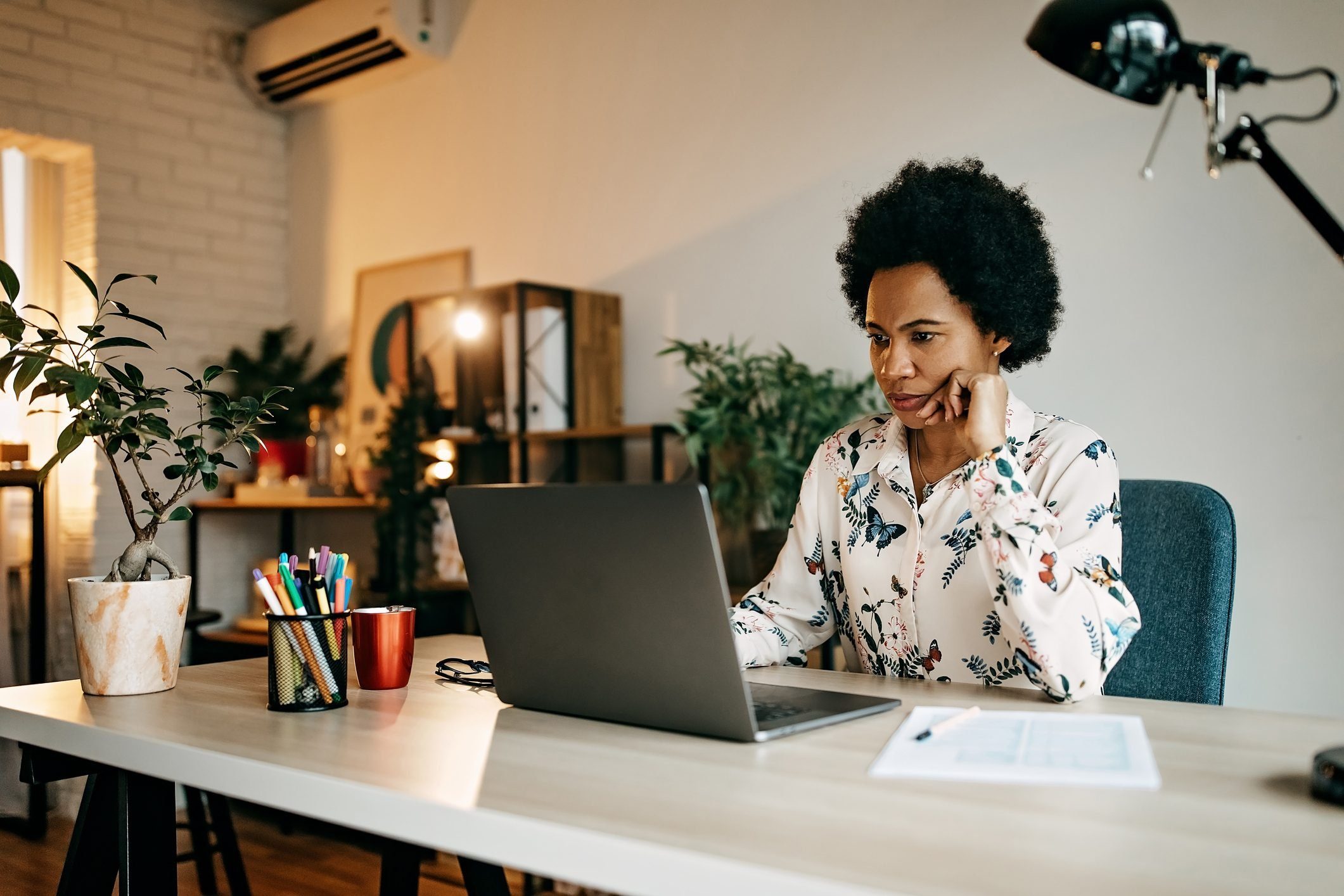
Participate in obvious ways
In an in-person meeting or get-together, it’s easier to see when people are paying attention and are engaged in what’s happening. With digital platforms like Zoom, you need to make a conscious effort to show your boss that you’re participating, your family that you’re listening, or your friends that you’re playing along. This can include leaving the camera on the whole time, raising your hand, chatting via text, using polls, and other methods, Bayer says. Simply nodding your head or murmuring “mmm-hmm” won’t cut it on Zoom.
No swearing
Zoom can feel more casual, but that doesn’t mean you should be casual with your manners, Bayer says. Whatever the standard would be for meeting in person with this group is the same standard you should follow with them online. While standards may differ based on the type of meeting happening, this generally means being polite, saying please and thank you, not yelling, and avoiding curse words, she says.
Stop using your mic to talk over people
Interrupting in real life is frustrating. Interrupting on a Zoom call is infuriating because it means the person hijacks the entire group conversation. “If you are asked to contribute, turn your microphone on and then speak when directed,” Bayer says. “Raise your hand or use chat if you have a question or comment. Do not simply turn on your microphone and speak over other speakers.”
Say your name before you speak
On Zoom meetings with many participants or with people you don’t know well, it’s easy to get confused very quickly about who is saying what. Avoid this by briefly saying your name before you comment, Donaldson suggests. Another way to identify yourself is to make sure your screen name matches your real name, rather than using an email handle or a spouse’s name.
Next, here are the etiquette rules to follow when visiting friends during a pandemic.
Is high blood pressure genetic?
High blood pressure can run in families—you might be able to blame it on genetics, as well as similar lifestyle habits.
“When it comes to high blood pressure, the acorn doesn’t fall far from the tree,” says Guy L. Mintz, MD, director of cardiovascular health and lipidology at Northwell Health’s Sandra Atlas Bass Heart Hospital in Manhasset, New York. “If your mom is obese or overweight or has diabetes, you are likely to as well, as these are two high blood pressure risk factors,” he says.
Genes are one part of this, but families also tend to eat the same way and often share similarities in how or if they exercise, Dr. Mintz notes.
Here’s what you need to know about high blood pressure, the potential role of genes in high blood pressure, and available treatment options.
What is high blood pressure?
High blood pressure occurs when the force of blood flowing through your arteries is too strong. Left untreated, it can damage your arteries and lead to heart attack, stroke, kidney disease, and vision problems. It often causes no symptoms until this damage has started, which is why it is known as a silent killer.
Blood pressure is recorded as two numbers. Systolic pressure, the upper number in a reading, is the pressure when your heart beats and pumps blood through your body. Diastolic pressure, the lower number, is the force when your heart is at rest and is filling up with blood. (Here’s how to get the most accurate blood pressure reading.)
A blood pressure of less than 120/80 mm Hg is normal. High blood pressure (aka hypertension) is diagnosed in stages. Stage 1 hypertension is a blood pressure reading of 130/80 mm Hg or higher. Stage 2 hypertension is blood pressure above 140/90 mm Hg.
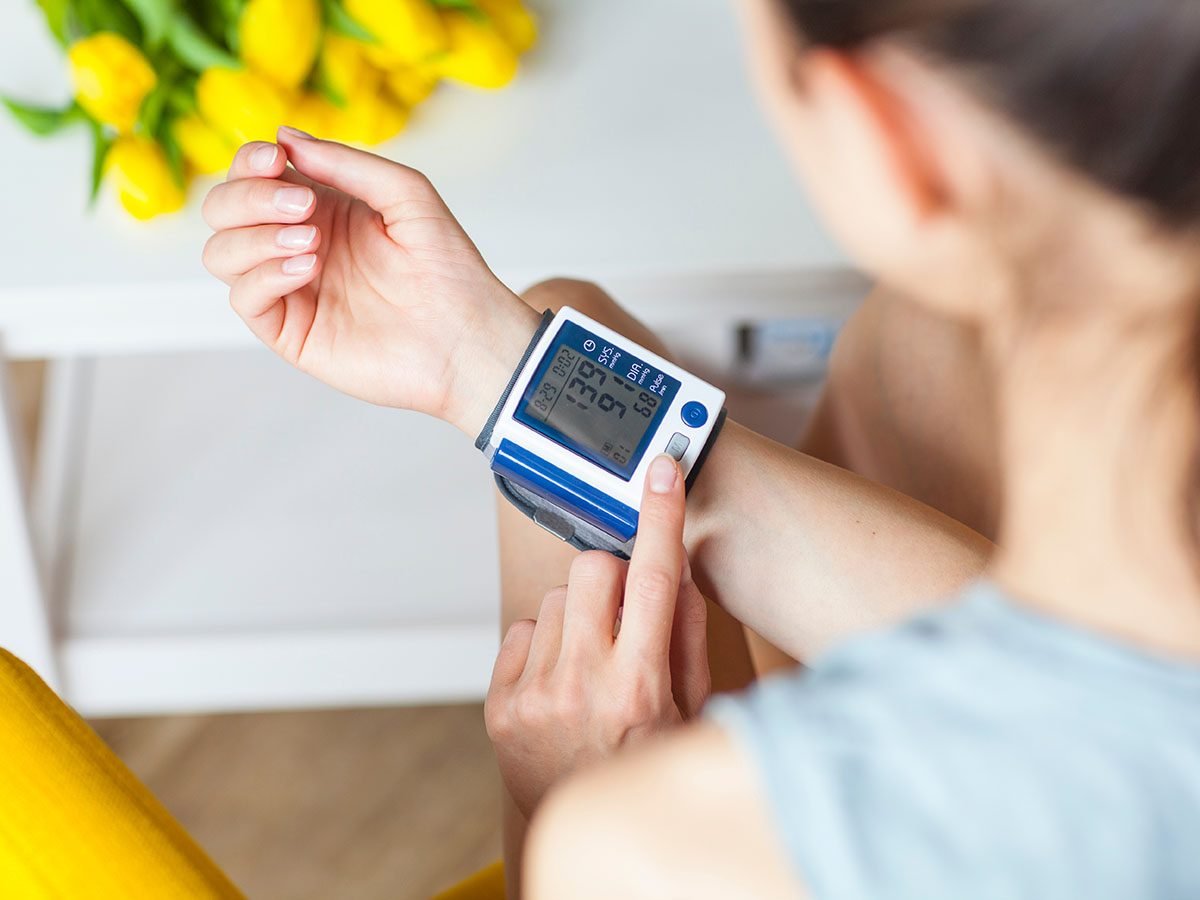
What causes high blood pressure?
Sometimes high blood pressure is a result of an underlying condition such as kidney disorders, blood vessel disease, or hormonal abnormalities. This is known as secondary hypertension, says Dr. Mintz.
Many things influence blood pressure, including some you can change. These include avoiding unhealthy foods loaded with salt, lack of physical activity, obesity, diabetes, smoking, stress, and consuming excessive amounts of alcohol. Other things—such as age, family history, gender, and race or ethnicity—also affect your risk for developing high blood pressure. However, these risk factors are not in your control. (Get to know these 10 risk factors for heart disease—and how to control them.)
For example, Black people develop high blood pressure more frequently than white people, according to the Centers for Disease Control and Prevention (CDC).
The precise cause of high blood pressure is unknown in as many as 95 percent of cases. This is called essential hypertension. Genes as well as lifestyle factors named above are likely at play, according to the CDC. In fact, more than 100 genetic variations have been associated with essential hypertension.
Blood pressure genes
Some genes may be involved in the renin-angiotensin-aldosterone system, a system that produces the hormones to regulate blood pressure and helps balance fluids and salts in the body. When your kidney can’t properly regulate fluids and salts, blood pressure can rise. Other genes seem to be involved in driving the normal function of the lining of blood vessels.
In a study of blood pressure genes that included 1 million people, researchers identified 535 new gene regions that may influence blood pressure. The study, published in 2018 in Nature Genetics, also found that many of these areas are also involved with the adrenal glands above the kidney and body fat.
To arrive at their findings, researchers cross-referenced genetic information and blood pressure data. Then, they compared the group with the highest genetic risk of high blood pressure to the lowest risk group. They noted that all the genetic variants were associated with having around 13 mm Hg higher blood pressure, 3.34 times the risk of developing hypertension, and 1.52 times the risk of poor cardiovascular outcomes such as heart attack or stroke.
One of the newly discovered gene regions is targeted by an approved type 2 diabetes drug. This suggests that a treatment may already be available if the findings are confirmed, the researchers note. The study also showed that the APOE gene, which is well known for its link to heart disease and Alzheimer’s, also has an effect on blood pressure.
How can I treat high blood pressure?
Currently, there are limited options for treatment until more is known about inherited high blood pressure. Also, there needs to be better matched targeted therapies to reverse or control how the gene affects blood pressure. Lifestyle changes with or without blood-pressure-lowering medication are the way to address high blood pressure and reduce the risk for heart attack, stroke, and other consequences of uncontrolled hypertension, Dr. Mintz says. (Does high blood pressure drugs increase your coronavirus risk?)
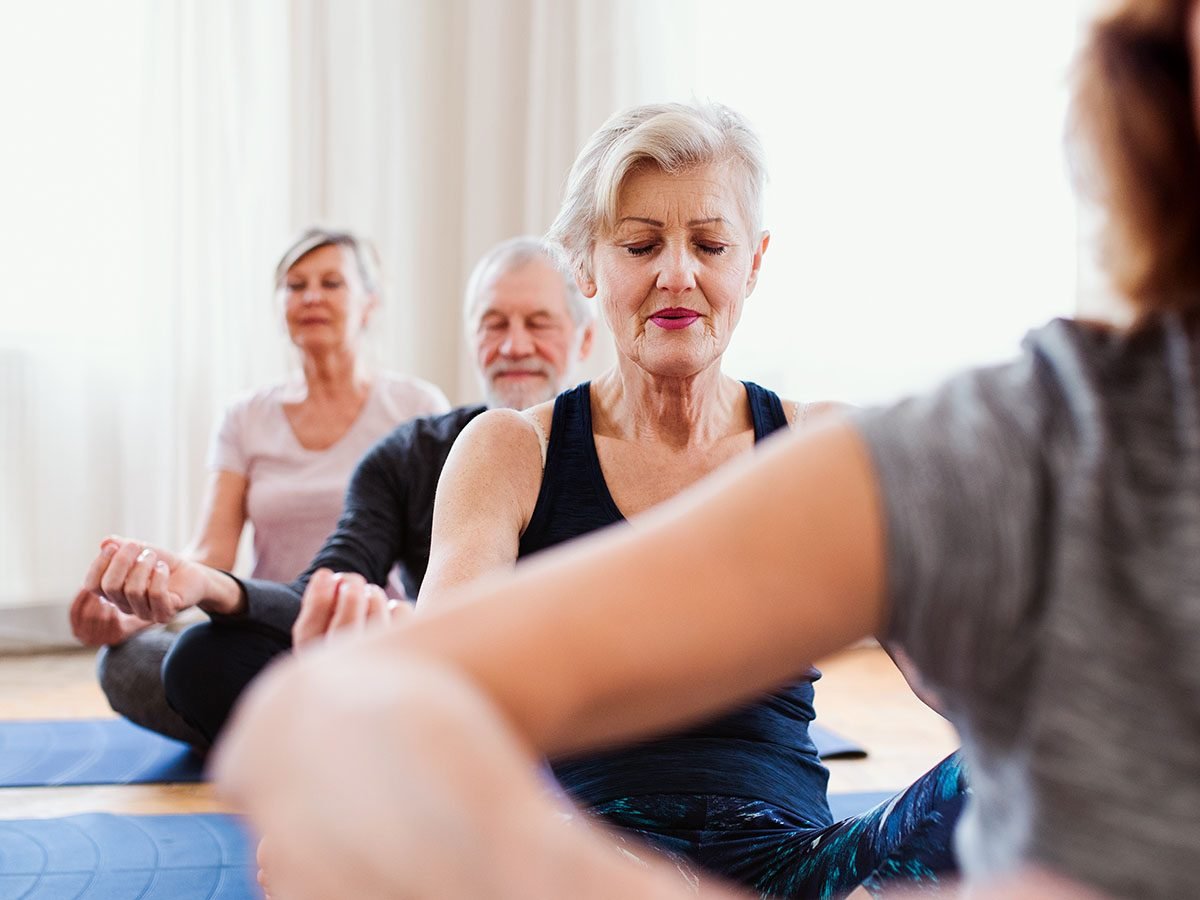
Lifestyle changes
“You can’t discount the importance of lifestyle changes when it comes to blood pressure risk,” he says.
Eating a heart-healthy, low-salt diet like the Dietary Approaches to Stop Hypertension (DASH) diet, getting regular physical activity (especially aerobic exercise), drinking alcohol only in moderation, not smoking, and taking steps to change how you deal with stress and stressors, will all make a difference, Dr. Mintz explains.
Certain diets such as DASH—which limits salt, red meat, and added sugar—and the Mediterranean diet—which is rich in fresh fruits and vegetables, lean proteins, whole grains, and healthy fats—are often recommended for lower blood pressure. (These are the healthiest high-fat foods you should be eating more often.)
“Both are great options and fairly easy to comply with,” says Evan Appelbaum, MD, a cardiologist at Men’s Health Boston, a Harvard-affiliated multi-specialty practice. “It’s about finding a healthy way of eating that fits into your lifestyle and you can stick with,” he says.
Exercise
Exercise matters too, he says. Every step you take can help lower your blood pressure, and this adds up to big changes, according to research presented at the 2020 American College of Cardiology’s Annual Scientific Session. In this study, systolic blood pressure was about 0.45 points lower for every 1,000 steps that participants took each day. This means that if you take 10,000 steps a day, you could have a systolic blood pressure that’s 2.25 points lower than if you took 5,000 steps a day. (Here’s how yoga and aerobic exercise can reduce your heart disease risk in half.)
Sleep
Treating sleep apnea, if you have it, can also help reduce blood pressure, Dr. Mintz says.
Marked by pauses in breathing while you sleep, sleep apnea is linked to treatment-resistant hypertension, and it often goes undiagnosed, he explains.
“At nighttime, if your heart is not getting oxygen, it puts out angiotensin II hormones which raise [blood pressure] and cause your arteries to contract,” he continues. Sleep apnea treatment may involve the use of a continuous positive airway pressure (CPAP) device that administers air pressure through your nose while you’re sleeping. (Can’t sleep? Here are 10 possible medical reasons.)
How important is my family history?
In addition to asking about diet, exercise, and other lifestyle habits, your doctor will also ask you about your family history if your blood pressure is high, Dr. Appelbaum says.
“If your parents had high blood pressure or heart disease, we know you are at greater risk, so this guides our treatment decisions,” he says.
“We try to assess cardiovascular risk, and if they or a close family member has diabetes and hypertension, it magnifies things, and we proceed faster with medication than if it’s just hypertension by itself,” Dr. Mintz agrees.
And it turns out that your grandparents’ heart health matters too. A 2017 study in the European Heart Journal suggests that the risk of high blood pressure is not only passed down from parent to child, but also from grandparent to grandchild. Specifically, high blood pressure before age 55 in grandparents was associated with the presence of hypertension in a grandchild. This held even after researchers controlled for other risk factors such as physical activity, salt intake, and alcohol.
What’s more, grandkids rarely lived in the same town as their grandparents, suggesting that they don’t share an environment. This study points to a large role of genes in high blood pressure that still needs to be analyzed.
The last word
Genes aren’t destiny when it comes to high blood pressure. Knowing your numbers and taking steps to get them where they should be are a start. Making lifestyle changes, possibly taking medication, and treating any underlying disorders can help stave off heart attack and stroke.
As researchers understand more about genes and how they increase blood pressure risk, more targeted treatments may be available to aid in these efforts.
Next, here’s how to know when high blood pressure is an emergency.




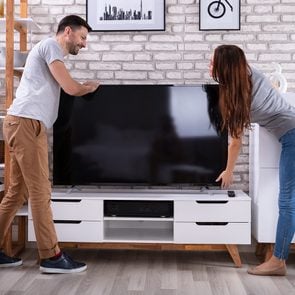


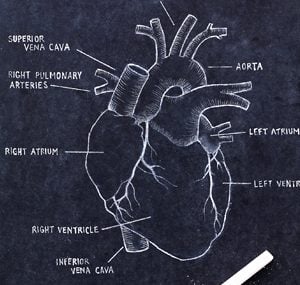 Ways to Prevent Heart Disease" width="295" height="295" />
Ways to Prevent Heart Disease" width="295" height="295" />